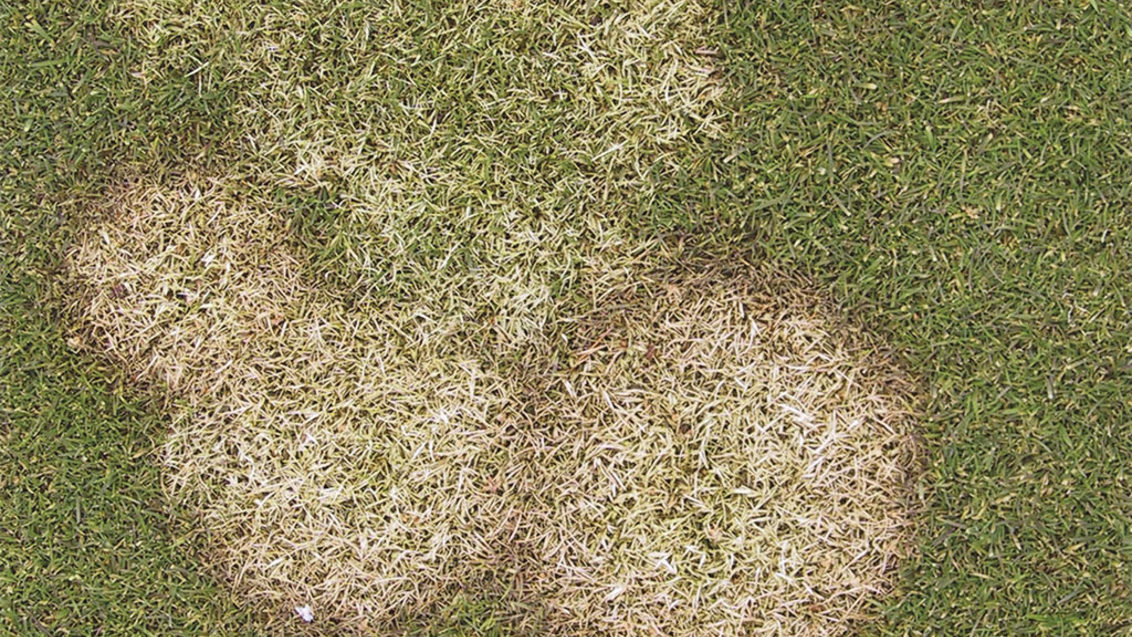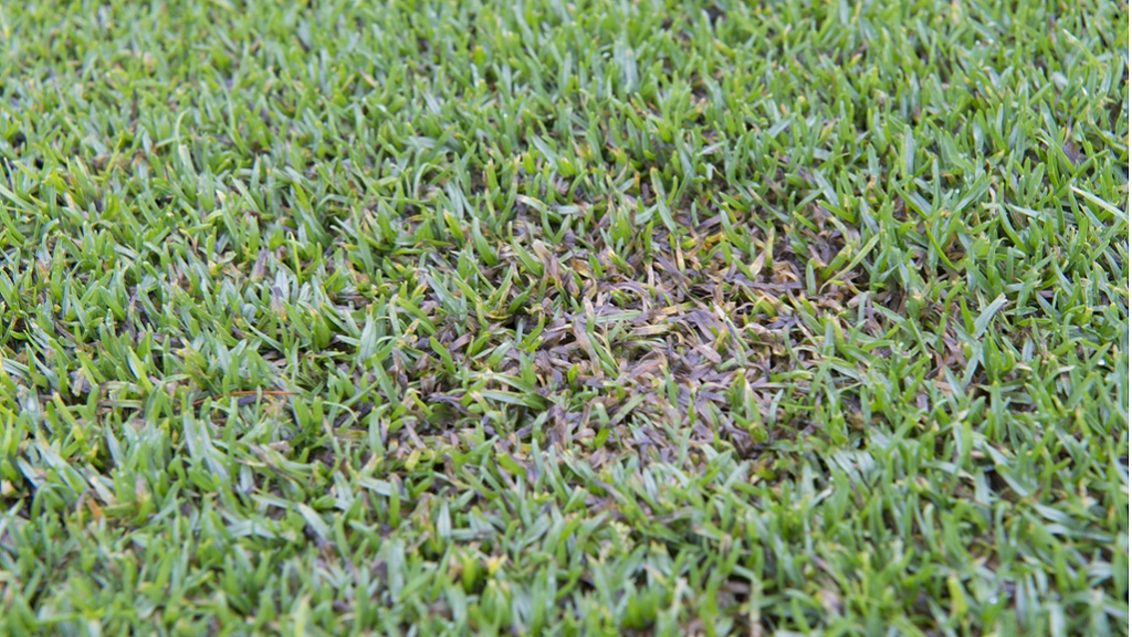Microdochium Patch
Turf Disease
Microdochium Patch symptoms begin as a darkened water-soaked appearance to the grass (Plate 3). The patches enlarge and may develop salmon-pink to orange-brown rings of conidia around the outside of the patch (Plate 2). In conducive weather conditions, white, pink or grey mycelia may grow over the patch surface.
Where is Microdochium Patch found?
Microdochium Patch is the most common and widespread disease at present in the UK and Ireland. It can be found on any area of turf, especially golf greens, tees, fairways and bowling greens. Grass swards dominant in Poa annua are the most susceptible grass species to attack.
When is Microdochium Patch likely to attack turf?
Infections of Microdochium Patch can occur at any time of the year during conducive weather conditions. It is most common and damaging during the autumn and winter, when the weather is mild and moist. It may also occur during spring in mild temperatures and during summer in warm, humid or thundery conditions.
Effects of Microdochium Patch
Microdochium Patch can be a devastating disease on fine turf surfaces as the patches may be many centimeters in diameter and adversely affect the playing surface, as well as its aesthetic value. Poa annua grass may ingress into the scars left by infection.
High Risk Situations
- Very humid conditions
- Prolonged wet leaf surface
- Soft new grass growth
- Excess nutrition
- Poa annua grass dominant sward
- Alkaline rootzone conditions
- Excessive thatch layer
- Heavy top-dressing during conducive weather conditions
- Some ITM activities that damage leaves or stress plants, eg. aeration
Integrated Turf Management
- Ensuring adequate drainage and manage the turfgrass to reduce surface moisture.
- Keep thatch layers to a minimum.
- Light penetration (especially morning sunlight) and airflow should be encouraged to dry the turf surface quickly.
- Use appropriate rates of fertiliser at the recommended timing to match turf growth and prevent lush growth when conditions are conducive to the pathogen.
- Use acidifying fertiliser such as ammonium sulphate to help reduce the pH at the turf surface.
- Discourage the ingress of annual meadow-grass.
- Avoid heavy applications of topdressing in disease conducive conditions.
- Apply iron to help harden the plant against infection prior to the onset of conducive conditions.
- Regularly look at the Syngenta Turf website and Turf Advisor app to identify periods of high risk.
Fungicidal Control
Preventative applications of fungicides will provide longer- term control of Microdochium Patch and ensure optimum playing quality of the turf. During periods of turf growth a systemic product will move around inside the plant, protecting new growth and avoiding product being quickly mown off. When turf growth is slow, a contact fungicide will provide very good protection of the leaf surface to prevent disease ingress. When turf growth is intermittent, often in spring and autumn, products with both contact and systemic activity can give an effective strategy.
The following products have label recommendation for Microdochium Patch control in the UK:
Ascernity | Heritage | Instrata Elite | Medallion TL | |
Mode of action | Dual Systemic | Systemic | Contact + Systemic | Contact + |
Dose rate | 3 l/ha | 0.5 kg/ha | 3 l/ha | 3 l/ha |
Water volume | 125-500 l/ha | 125 - 1000 l/ha | 500 - 1000 l/ha | 125-500 l/ha |
LERAP |
| Not required | B | B |
Suggested Programme
During late summer, Ascernity or Heritage should be applied at full rate when the GreenCast Microdochium patch model has predicted medium-high disease risk and the forecast is for further conditions conducive to the spread of Microdochium Patch (see the Turf Advisor app for a local forecast).
During winter months turf managers should switch to the long-lasting contact activity of Instrata Elite or Medallion TL, applied every month to six weeks as required. Check Turf Advisor to determine the risk of infection occurring or spreading to help determine the best timing of any fungicide applications.





